#statusMessage#
Do you want to start the compare now?

Our electromagnetic environment is heavily burdened due to the multitude of transmitters and sources of interference present today. To realistically simulate military attack scenarios in the laboratory, measurement technology with excellent signal integrity is required. Precise simulations allow for comprehensive validation of electronic protection systems – aiming to ensure that military units can reliably identify actual threats and minimize the associated risks. The arbitrary waveform generator (AWG) is an indispensable tool in the development of military technology components. This article provides insight into the significance of signal generation for radar detection and jamming systems.
Modern measurement technology, capable not only of capturing but also dynamically reproducing the physical and electromagnetic environment, is an essential tool for development engineers. In military technology, such tools support all development stages – from prototyping and precise validation to final deployment testing. This ensures that technologies are optimized under realistic conditions and that armed forces are optimally protected.
A programmable Arbitrary Waveform Generator (AWG) enables the precise and repeatable generation of the signals required for any test scenario. Together with innovative measurement and analysis tools, the AWG forms a fundamental part of laboratory equipment for the development, validation, and testing of complex systems in modern electronic warfare, including experimental use. To fulfill these tasks, an AWG must meet high standards regarding bandwidth, sample rate, vertical resolution, dynamic range, and channel count, allowing for realistic reproduction of demanding scenarios with diverse signal types and frequencies.
Electronic Warfare (EW) encompasses all measures to utilize and control electromagnetic waves in order to detect, disrupt, or deceive enemy systems. The goal is to reduce the effectiveness of adversary communication and weapon systems while simultaneously protecting one’s own systems. Modern EW covers not only traditional radar systems but also satellite communications, data links, and, increasingly, software-defined radio technologies (SDR). EW is divided into three main disciplines:
For each of these disciplines, it is crucial that the measurement equipment is functionally capable of analyzing or emitting a wide spectrum of modulations, protocols, and frequencies.

Modern EW scenarios place high demands on signal and function generators. Key performance characteristics that enable precise simulation of complex signals in the laboratory include:
The Tektronix AWG70000B arbitrary waveform generator enables precise simulation of complex signals, making it a market-leading tool in military signal generation.
EW aims to capture, analyze, and classify electromagnetic emissions in order to generate situational awareness and conduct threat analysis. The technical ability to recognize various types of modulation and protocols is crucial for targeted intervention in communication and sensor systems. Key questions include:
Interferometric direction-finding systems, where multiple antennas are arranged at known distances, utilize the phase difference of a signal. The phase difference, resulting from signal time-of-flight differences, allows calculation of the signal’s angle of arrival. Modern systems achieve phase resolution at the femtosecond-level, providing angular accuracy within a few degrees – crucial for threat localization and identification.
Laboratory testing of such systems imposes specific requirements on the signal source:
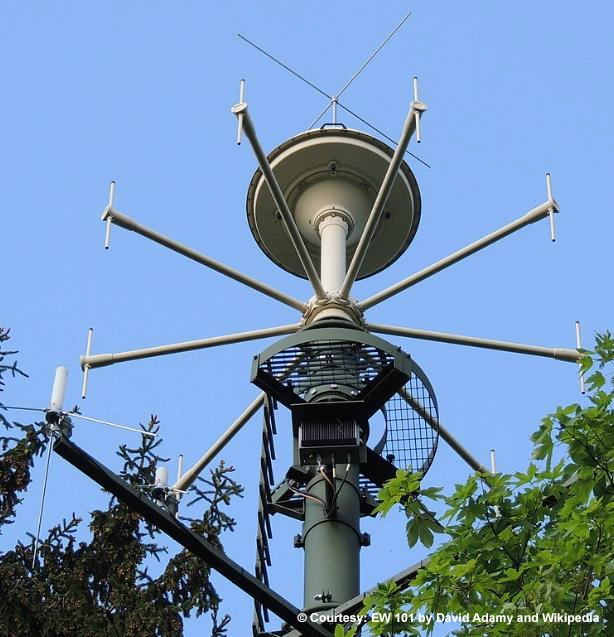
Three prominent trends currently shape the development of EW systems: phased-array (AESA) radars, MIMO radars, and DRFM radar systems (jamming).
Phased-array radar employs active electronic beam steering of an antenna (Active Electronically Scanned Array, AESA). The radar system uses numerous small transmit/receive modules (TRMs) that generate the transmitted energy directly within the antenna. Each module can be individually controlled, enabling rapid target tracking and flexible beam shaping. Beamforming is achieved through precise phase shifts of the individual modules.
Test requirements: AESA systems can be realistically tested in the lab using an arbitrary waveform generator (AWG). The AWG must be capable of simulating the complex beamforming and modulation patterns of these systems, including rapid switching operations and simultaneous multi-channel output.
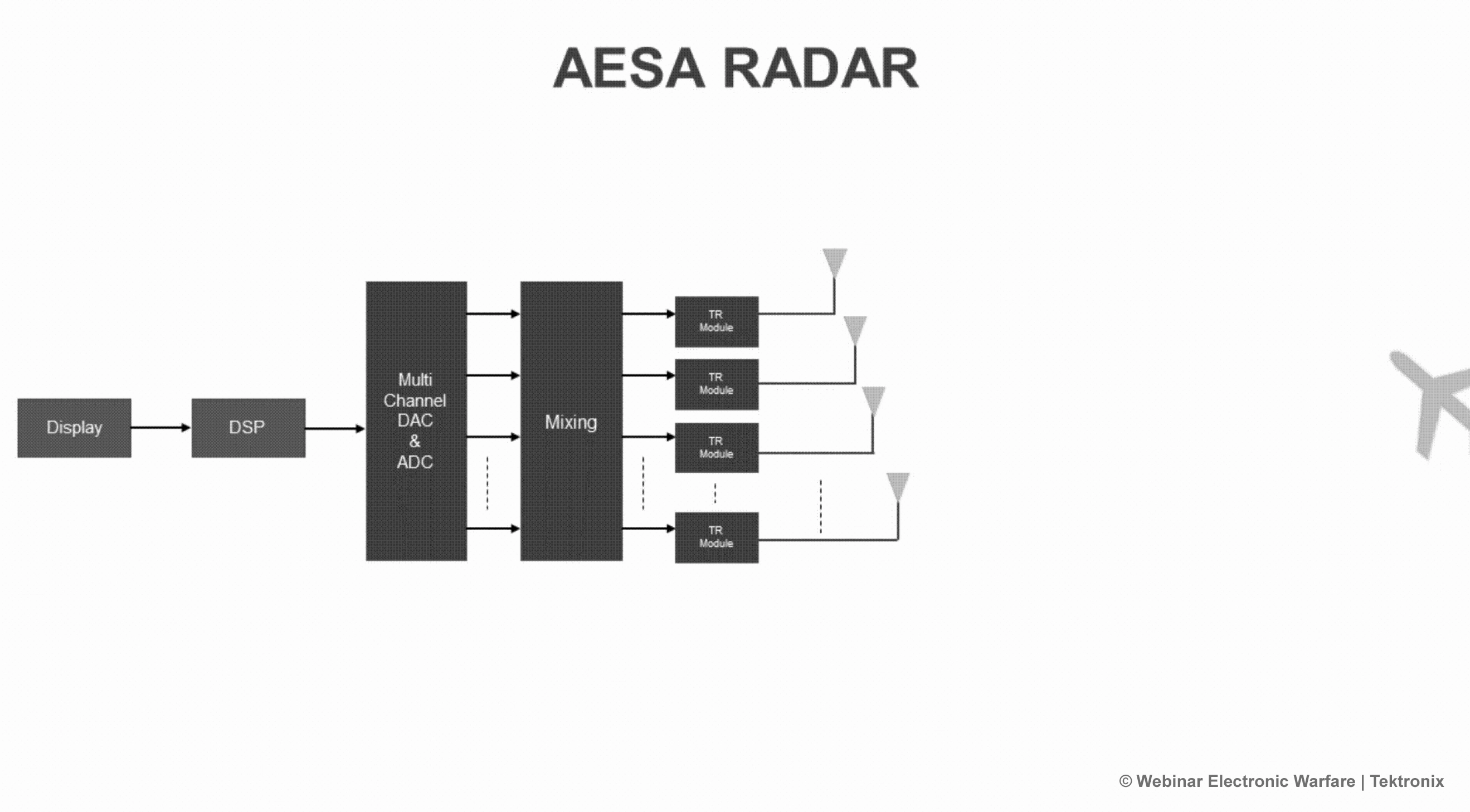
MIMO radars (Multiple Input Multiple Output) employ several orthogonally arranged antennas that transmit and receive independently. This enables simultaneous coverage of the entire field of view, improved target detection through spatial diversity, and the parallel use of different frequencies and modulation schemes.
Test requirements: AWGs are essential for simulating complex MIMO scenarios. They must be capable of generating orthogonal, phase-coherent signals and controlling the timing, frequency, and modulation for each channel individually.
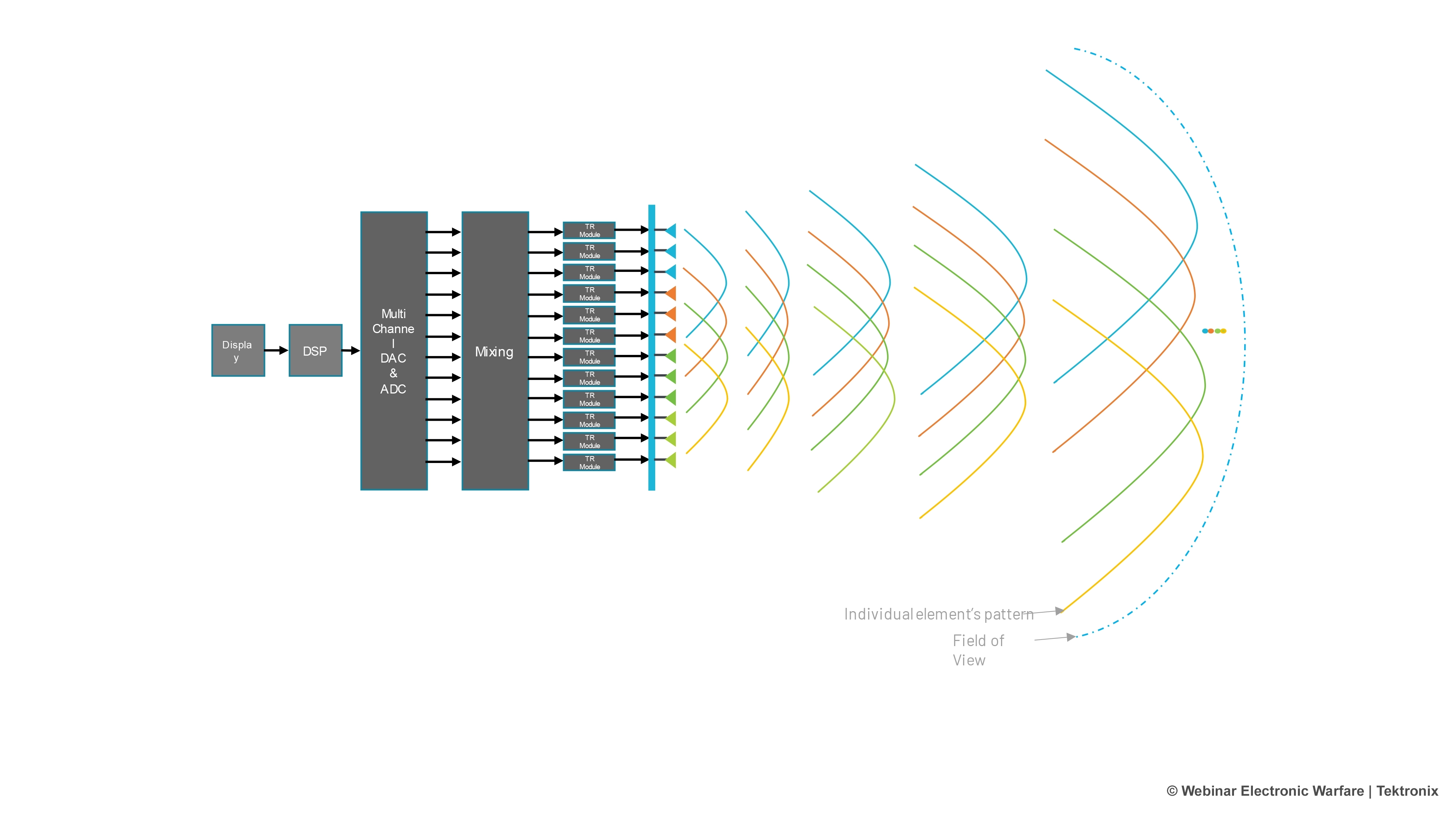
Digital Radio Frequency Memory (DRFM) is a key technology for modern jamming techniques. Its goal is to deceive enemy radar by presenting false target positions. DRFM systems receive radar pulses, digitize them, and store a replica that can be modified and retransmitted – for example, with a time delay to manipulate radar velocity measurements or to create a false target by sending the signal into the radar’s side lobes.
Typical DRFM applications include VGPO (Velocity Gate Pull-Off) for velocity deception via Doppler manipulation and RGPO (Range Gate Pull-Off) for range deception. In RGPO, a delayed return signal is sent to the enemy radar, causing the target to appear to move progressively farther away until it loses track.

The following table provides an overview of the different types of jamming techniques used in the context of Electronic Countermeasures (ECM).
| Type of Jamming | Target |
|---|---|
| Communication jamming | Disruption of adversary communication systems (GSM, TETRA, SATCOM, etc.), e.g. by broadband noise, modulation interference, protocol-based attacks (packet loss, spoofing) |
| Radar jamming |
Prevent target acquisition or tracking, e.g.:
|
| Noise jamming (cover jamming) | Overlay target signals with high noise level to degrade SNR |
| Deception jamming (decoy) | Generate false return signals to mislead the radar, e.g. by using RGPO |
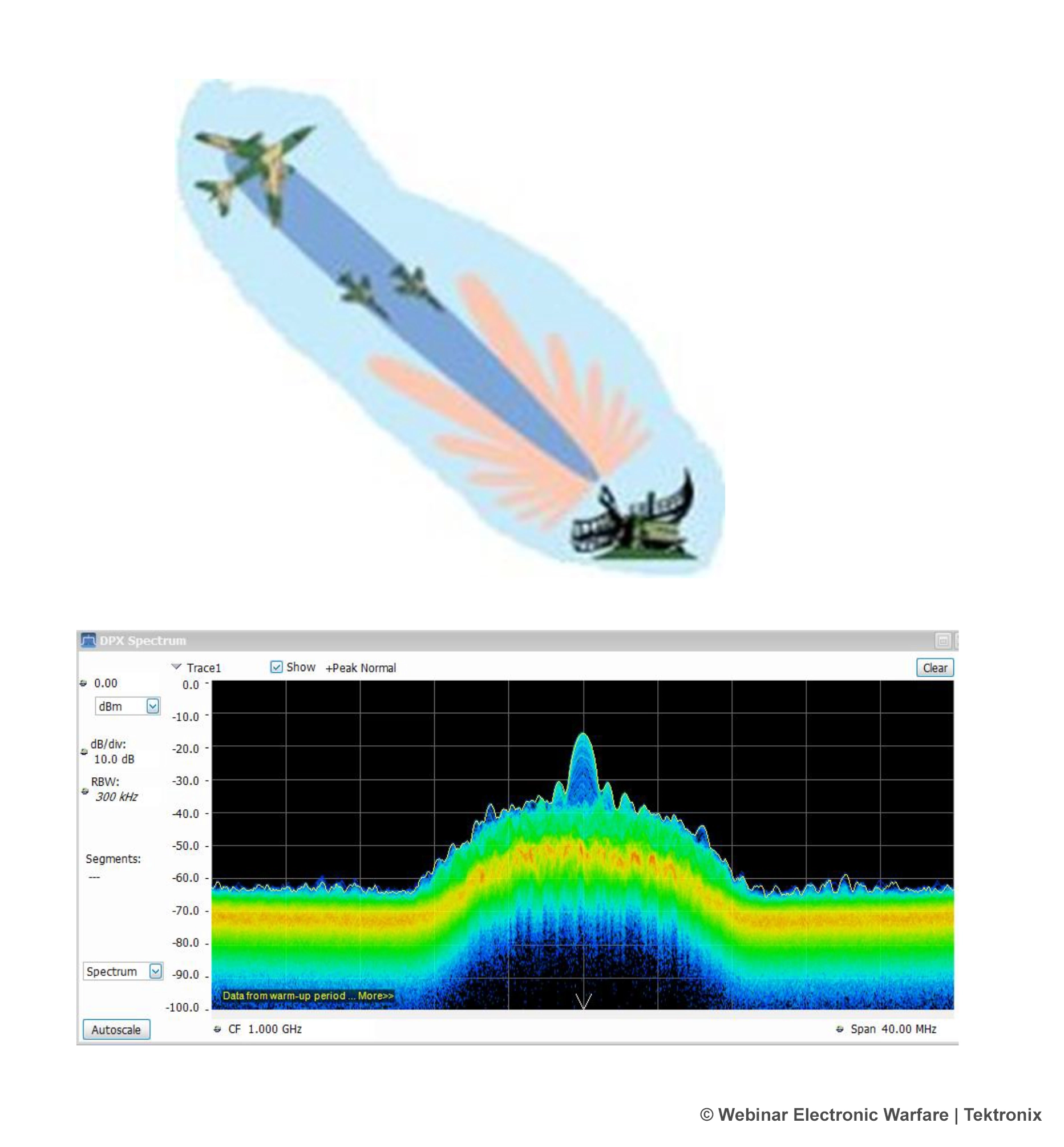
Simulating complex field scenarios in the lab is a fundamental method for developing and testing modern EW systems. AWGs enable replication of real threat situations, including dynamic and rapid frequency changes under repeatable and controllable conditions. This reduces costs and time by minimizing the need for extensive field trials.
Recording and Playback: Jamming signals (e.g., I/Q data) are typically recorded in the operational environment. Importing, replicating, and playing back these signals in the lab enables realistic system validation tests as well as the development of improved filtering and analysis methods.
In modern military development, multi-emitter scenarios are increasingly important to meet the complexity of contemporary and future systems. Multiple signals from diverse sources (GSM, CDMA, radar, OFDM) can be combined, including user-defined or recorded signals, for flexible laboratory integration. The temporal relationships between signals can be precisely controlled to simulate complex emitter interactions, crucial for systems with multiple receiving antennas (Angle of Arrival, AoA). Modern AWGs provide software solutions for flexible scenario configuration and additional signal source integration.
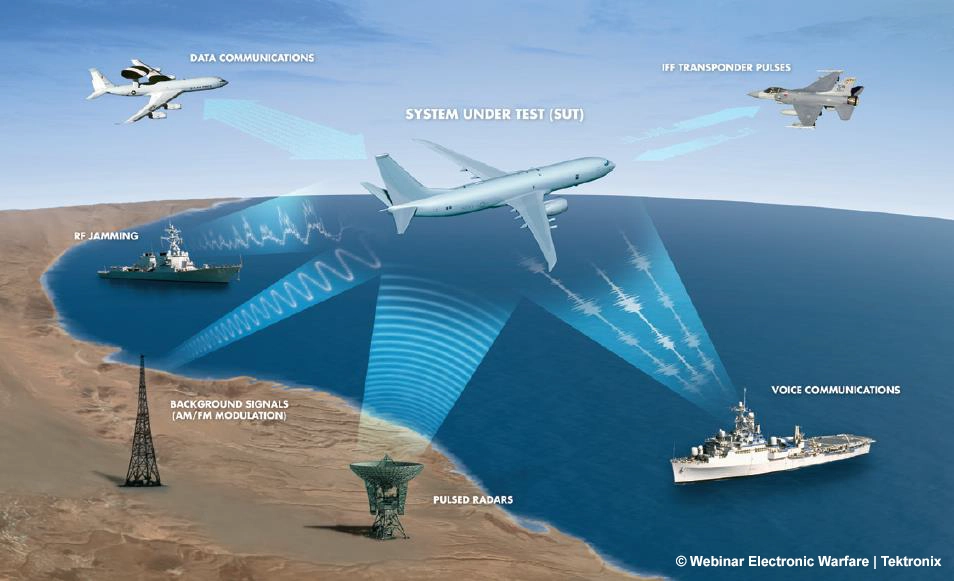
The increasing digitization and complexity of military threats demand innovative methods for signal generation. EW development engineers face the challenge of creating effective systems that can be tested under realistic laboratory conditions. Current trends, including AESA, MIMO, and DRFM radar systems, as well as multi-emitter scenarios, require advanced measurement technology capable of emitting a wide range of modulations, protocols, and frequencies.
Arbitrary waveform generators (AWGs) are an essential component of modern EW test environments, contributing significantly to cost and time efficiency in system development, validation, and optimization. They enable the realistic simulation of complex scenarios, excellent phase control, and high switching speeds. Their importance will continue to grow, particularly with the integration of AI, cognitive systems, and adaptive threat simulation.